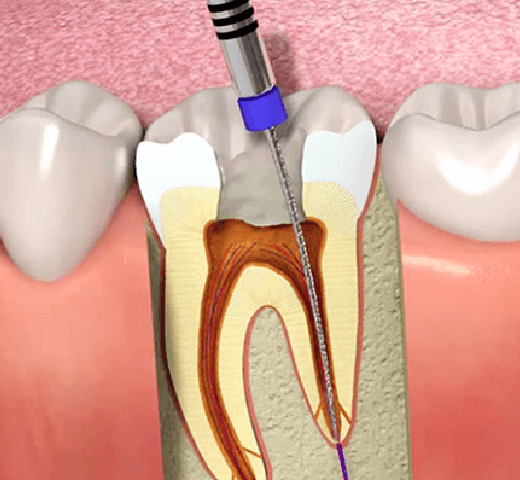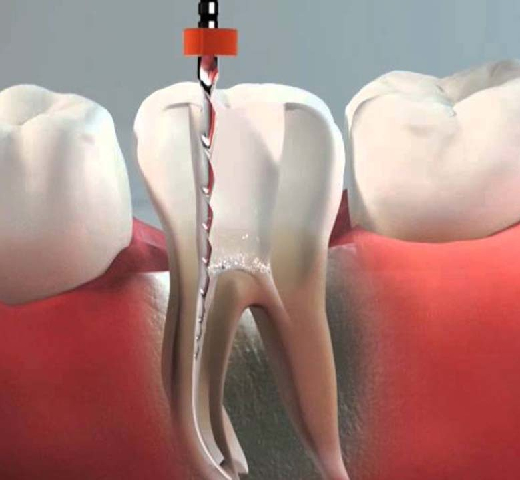
Root canal treatment is a dental procedure used to treat infection or damage inside a tooth’s pulp (the innermost part containing nerves and blood vessels). It involves removing the infected or damaged pulp, cleaning and disinfecting the root canals, and sealing the space to prevent further infection.
Root Canal Treatment Process
- Diagnosis and X-ray : The dentist evaluates the tooth, usually using an X-ray, to assess the extent of the infection or damage.
- Anesthesia : Local anesthesia is administered to numb the tooth and surrounding area, ensuring a pain-free procedure.
- Access Opening : A small opening is made in the crown of the tooth to access the pulp chamber.
- Cleaning and Shaping : The infected or damaged pulp is removed, and the root canals are thoroughly cleaned, shaped, and disinfected.
- Filling and Sealing : The cleaned canals are filled with a biocompatible material called gutta-percha, and the opening is sealed with a temporary filling.
- Restoration : A permanent filling or crown is placed on the tooth at a later appointment to restore its function and appearance.
Indications for Root Canal Treatment
- Severe Toothache : Persistent pain while chewing or when pressure is applied.
- Sensitivity to Hot or Cold : Prolonged sensitivity to temperature changes.
- Swelling or Tenderness : Swelling around the gums or face, or a small pimple-like bump near the affected tooth.
- Tooth Discoloration : Darkening of a tooth, which may indicate nerve damage.
- Infection or Abscess : Presence of pus, indicating an infection in the bone.
Benefits of Root Canal Treatment
- Saves the Tooth : Prevents the need for tooth extraction.
- Restores Function : Allows you to chew and bite with the treated tooth.
- Eliminates Pain : Relieves discomfort caused by infection or damage.
- Prevents Spread of Infection : Protects surrounding teeth and tissues from further infection.
Alternatives to Root Canal Treatment
- Tooth Extraction : Removing the tooth is an alternative, but it is generally considered a last resort. Missing teeth may require replacement with a bridge, implant, or denture.
- Pulp Capping : In cases where the pulp is exposed but not infected, a pulp capping procedure can help preserve the tooth’s vitality.
Aftercare Tips
- Avoid Hard Foods : Refrain from chewing hard or sticky foods on the treated tooth until fully restored.
- Maintain Oral Hygiene : Brush and floss regularly to keep the area clean.
- Follow-Up Appointments : Visit your dentist for any necessary check-ups or additional treatment.
Root Canal Treatment F&Q
Root canal treatment is a dental procedure that removes infected or damaged pulp from the inside of a tooth, cleans, disinfects, and shapes the root canals, and places a filling to seal the space and prevent re-infection.
It’s necessary to treat the infected pulp of a tooth, which can cause pain and swelling, and to prevent the spread of infection to other areas of the mouth, ultimately saving the tooth from extraction.
Despite its reputation, root canal treatment is generally not painful when performed with modern techniques and proper anesthesia. Most patients experience relief from pain caused by the infection.
The procedure can vary in length depending on the complexity of the tooth’s root system and the severity of the infection but typically requires one to two visits, each lasting about 90 minutes.
After the procedure, the treated tooth may feel sensitive for a few days, especially if there was pain or infection before the treatment. This discomfort can usually be managed with over-the-counter pain medications.
Root canal treatment is highly successful, with more than a 95% success rate. Most teeth fixed with a root canal can last a lifetime with proper care, including good oral hygiene and regular dental check-ups.












